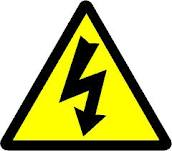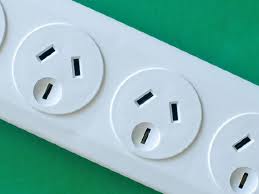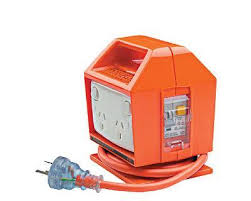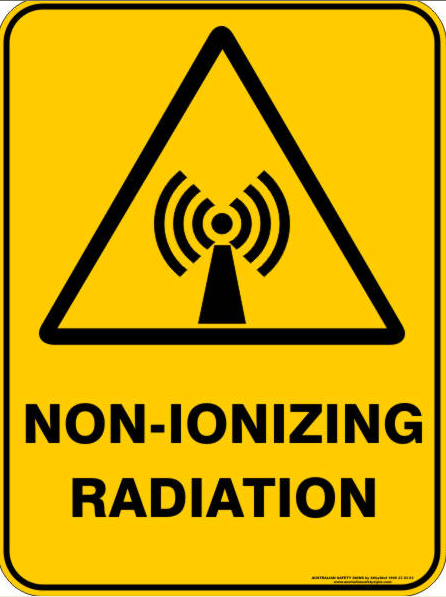Electrical safety 
The human body’s communications system works on electrical impulses transmitted along the nerve system and electro-chemical stimuli. Sometimes these stimuli are used to contract muscle tissue, like your hart. Your heartbeat, which is regulated by these tiny electrical impulses sent from your brain, is easily interrupted by quite small amounts of electricity flowing through your body. In fact only 12 milliamps of electric current can cause heart failure, arrhythmia or fibrillation, all conditions, which can quickly cause death.
If your equipment runs from a battery supply or an approved low voltage power supply it is relatively safe but can be dangerous under some situations, particularly when using large capacity batteries. It is important that you never remove the covers on your equipment and if you ever suspect that a piece of equipment is faulty or broken do not use it until it is replaced or repaired.
Electricity is like water and will always take the shortest path, so if going throw you is the quickest path it will. The effects of electricity on the human body can very depending on were the electricity is flowing. The most dangerous path is one that goes throw your hart. When someone is being electrocuted it is some times impossible for them to move. It is often also accompanied by the person shaking a little.
If you ever suspect someone is being electrocuted keep well away and try and turn the power off, if you cannot use a wooden broom or like to hit them out of the way. This is one of the few times it is ok to hit someone.
Electricity burns just like Fire, the only change is that it only burns were the electricity has passed throw. You treat an electrical burn just like a normal burn the important thing to remember about elocution is that the last thing you need is to be hurt as well
So have you ever thought what would happen if you were to place I bit of metal across the terminals of a battery? Or a power point? we are not saying you should try. But it is quite spectacular. Basically the wire that is used for shorting gets very, very hot so hot that it chaces on fire and begins to burn. Not very good is it, it is a very good way to burn down a house or the hall, and that is why we don’t do it.
Electricity also has a very nasty habet of being stored in place. Some devices can hold electricity in them for weeks after they have been switched off, Older TV’s are a good example of this. Power points while being very use full are also be very dangerous, never ever plug some thing that was not deigned for a power point into one, never pull a power plug by it cord and make shore you turn the switch off before you remove the plug.
Extension cords are also a very dangerous item, people drag them around over rocks throw door ways and so on, they get cuts and damage to them and can even lead to exposed wires, if you ever see damage to a lead do not uses it and get rid if it. The point I am trying to get across is be safe around electricity not just at scouts but wear ever you are
Power Supply’s 

Believe it or not all things electrical need power from some were. you can not make energy from nothing and you can not turn energy into nouthing. The Most common places are from batteries or from a power point in the wall. Battery’s are in some cases much safer but become expensive if you have to keep replacing them, and can be heavy and have limited oppression time.
Batteries can be very dangerous pieces of equipment under some concisions’ they are normally safer than the mains but be aware they pack a lot of energy for their size and contain hazardous chemicals. Large batteries and some high energy small ones like alkaline, Nickel cadmium, Nickel Metal Hydride, and lithium batteries can supply very high current. A short circuit placed across a battery can easily cause a fire, or even an explosion of the battery itself due to internal heating and gas build-up For this reason all battery powered equipment other than simple torches Etc. must have a protective fuse. Battery’s also contain very corrosive and poisons chemicals. Any chemical leak from a battery can cause skin irritation and some, especially car batteries, can cause severe acid burns or blindness Mercury batteries also extremely poisonous, watch battrys or button cells are also very hazaduze if swolowed button cells sould not ever be left siting around
• Never short Circuit a Battery
• Never Dispose of a battery in a fire
• Always use a protective fuse with batteries
• Yong Children should never play with batteries
Large batteries can also be very heavy and can easily result in injury if not handled correctly.
Large batteries should always be on the ground or as low to the ground as you can to prevent it falling on you. When recharging a lead acid (Car battery or wet cell) battery make shore it is well-ventilated and away from sparks and flame. Always use the recommended batteries in handheld devices. All batteries have a negative normally marked as a “-“ and a positive normally marked as a “+” positive wires are normally red and negative are normally Black but check the manual before trying to wire up, batteries have a voltage rating based on the number of cells in side them, common battery voltages are 1.5V 6V 9V 12V. It is important that you use the correct voltage battery for the equipment you will be using. Most equipment will have stamped on the unit or on the manual what sort of batteries they use. If you use a battery that is to big it will damage the equipment to low and the equipment will not work. Also be aware that battery can only be recharged if they are so marked trying to recharge a non rechargeable battery can result in a explosion.
Battery Hazards
• There are two hazards associated with Large batteries that operators should be aware of
1. The risk of explosion
2. The risk of chemical burns.
• As a result of the chemical process occurring within the cells of a battery during charging, gas is produced. When mixed with air, this can form highly explosive mixture, which can be ignited by a naked flame, a lighted cigarette, or a spark. The spark caused by breaking or making an electrical connection in the vicinity of the charging battery may be sufficient to ignite the Gas-air mixture.
• If using metal tools to work on battery connections, extreme care must be taken to ensure that terminals are not short-circuited. Insulated terminal covers are recommended.
• The electrolyte in battery cells is sulphuric acid. It is sufficiently concentrated, particularly just after charging it can damage eyes, skin or clothes if spilt or splashed. Immediate and prolonged application of running water is recommended to rinse the affected skin or clothing.
• It is recommended that eye protection be worn when a person is carrying out maintenance on batteries. Batteries should not be topped-up whilst on charge.
Mains power 
The Australian Power system runs at 240Volts AC 50Hz and can be fatal if touched. If you connect this to to a device directly it will blow it up and may even set it on fire. So we need a device to turn this power into some thing that will work with the equipment. We use a device called a transformer or mains power supply. Most handheld devices come with a transformer for charging always use them and never try and use a transformer that was not made for the equipment
For the mains supplies it is best you refer to your equipments manual and get a supply that will work with your equipment, if you ever suspect a fault with transformers of power sypplys replace them or get a licensed electrician to check them for you. The Australian mains system uses a green/yellow earth wire connection to protect against electric shock from short circuits and faults. for this reason NEVER REMOVE AN EARTH CONNECTION
Avoid the use of extension leads. Leads should never ne used coilded up as this can cause excesive heating partculy if you have a domestic appliance such as a water pump, microwave ect conected. Always check leads and cables for signs of damage or wear and repplace as necessary. if you are useing extension leads make shore thst are placed so they do not create a trip hazard.
Avoid haveing a tangle of cables and chains of power boards. one large power borad is beatter then a llot of small ones.
Fuses 
Fuses are used to protect electric circuits from high currents. A fuse is designed to melt at a certain current (I) in Amps and break the electric circuit, thereby stopping the Power. If you do replace a fuse it is most important that you replace it with one of the same type and rating. If you use an incorrect fuse rating the fuse may not blow when it should and cause a fire, never use things like fencing wire, nails screws and other bits of metal in a fuse holder. The problem with fuses is that they require a large current to blow. Fuses are designed to prevent electrical fires and will not protect you against electrocution if you happen to touch a live wire or part
RCD/RCCB/ELCB 
A residual-current device (RCD), residual-current circuit breaker (RCCB), Earth leakage ciruit braker (ELCB), is a device that quickly disconnects current to prevent serious harm from an ongoing electric shock. Injury may still occur in some cases, for example if a person falls after receiving a shock. In Australia, they are sometimes known as safety switches or a RCD. An earth leakage circuit breaker (ELCB) may be a residual-current device.
These electrical wiring devices disconnect a circuit when it detects that the electric current is flowing in the earthing system. Even a small leakage current can mean a risk of harm or death due to electric shock if the leaking electric current passes through a human; a current of around 12 mA (0.012 amperes) is potentially sufficient to cause cardiac arrest or serious harm if it persists for more than a small fraction of a second. RCDs/RCCBs are designed to disconnect the conducting wires quickly enough to prevent serious injury from such shocks. (This is commonly described as the RCD/RCCB being "tripped".)
A RCD does not provide protection against unexpected or dangerously high current when current is flowing in the usual wires in the circuit, therefore it cannot replace a fuse or protect against overheating or fire risk due to overcurrent (overload) or short circuits if the fault does not lead to current leakage. Therefore RCDs are often used or integrated as a single product along with some kind of circuit breaker, such as a fuse or miniature circuit breaker (MCB), which adds protection in the event of excessive current in the circuit. RCDs also cannot detect the situation where a human accidentally touches both conductors at the same time, since the flow of current through an expected device, an unexpected route, or a human, are indistinguishable if the current returns through the expected conductor.
RCDs are usually testable and resettable devices. Commonly they include a button that when pressed, safely creates a small leakage condition, and a switch that reconnects the conductors when a fault condition has been cleared.
Circuit Breakers 
A circuit breaker is an automatically operated electrical switch designed to protect an electrical circuit from damage caused by overload or short circuit. Its basic function is to detect a fault condition and interrupt current flow. Unlike a fuse, which operates once and then must be replaced, a circuit breaker can be reset (either manually or automatically) to resume normal operation. Circuit breakers are made in varying sizes, from small devices that protect an individual household appliance up to large switchgear designed to protect high voltage circuits feeding an entire city.
Approved Appliances
A Compliance Sticker is a lable that a manufactuerer is required to place on all mains powered equipment that is sold, hired, or supplied in Australia. it shows that the equipment complies with relevant mandstory standarsds and is authorised for sale. The compliance sticker may simply have a Standsrds Tick mark and a number starting with 'N'. Sometimes, but not always, the compliance sticker will also show the mains Voltage, equipmnet wattage, and sometimes the Mains frequencey
Working at higths
Any time you are working more than 2 meters abouve the floor you are working at higths. Working at higths is potentially dangerous. Some itams are very hevy or large that need to be put into the air and may have a lot of wind resistance. Always wnsure that someone is with you and take all the necessary safty precautions for the use of ladders and other working a higths itams. It is recomended if you are not experienced with working at higths you ask for assistance from someone who is
Care must also be taken when working near power lines at no time is anything long enough to come near the lines to be close enough to fall on to the lines or be lifted unto them
Ligthning and Static
Radio antennas, beeing higth and prominate, make excellent ligthing rods. If a antenna is struck by ligthning, or even if there is a close ligthning strike, it will have very higth and dangerous coltages induced into it. You should not use any equipmnet conacted to anttenas or phone lines in a electrical storm. it is best to disconnect all antennas from your equipment when a storm is aproching. DO NOT TRY AND DISCONNECT WHEN THE STORM IS OVER HEAD. it is also possable while working on computers and elctronics to damage them from static buld up this like ligthning is very higth voltage it is advised that earthing of you body be done before working of cumputers or electronics, this is normaly done useing a earth strap worn as a wrist band with a wire to the case of the equipmnet you are working on
Audio volume
Loud noise can cause cumulative and permanent hearing loss. all ways take care not to have audio up to loud (If you have to raise you voice to talk to the person next to you it is to loud). By the time you find out your hearing has been damaged it may be too late
Higth Voltages & Currents
High Voltages & Currents can be very dangerous and a very quickly result in harm if miss handled. High Voltages often have the ability to jump from wires to you or other items. This is why you must be very careful around power lines and substations. The best example of high voltages can be seen in a cars spark plugs which run at high voltage to make a spark in the air. High currents can burn horribly and can be very low voltage but very high current like in some welders. having high currents running throw your body can burn very deep even inside your body
Chemicals
Always be very careful of working with chemicals some are very easy to accidently make a reaction with such as chlorine or are very toxic to us or the environment. NEVER MIX CEMICALS IF YOU DO NOT KHOW WHAT WILL HAPPEN always wear protective equipment if requested by the label. Always follow the instructions exactly as some chemicals can be fine by them self but when mixed with another safe chemical can become hazardous
Radio Frequency Radiation Safety 
High levels of electromagnetic radiation can be very dangerous (the sign pictured above is the Australian standard sign for areas that may contain high levels of RF radiation do not enter theses areas unless permission from the site owner is obtained). The major radiation risk is from that part of the system, which is designed to radiate – the antenna. The greater the power, and the higher the frequency of a radio transmission the higher the risk of the antenna being a radiation hazard It is currently believed that low powered handheld radio equipment with inbuilt antennas, or any equipment operating at low power dose not poses a significant radiation risk. However, you may only be running a small amount of power but some antennas focus the power into a narrow beam. A directional antenna (also called a high gain antenna) concentrates the power in a specific direction there can be many times the normal power level. Antennas also carry very high Voltages and touching an antenna while it is transmitting can Cause an “RF Burn" this is similar to a normal burn except for the fact that it is caused by radiation running through your skin and is often quite deep, severe, and slow to heal a RF burn can be a 2nd or 3rd degree burn. If you have any doubts about this just remember your microwave oven it uses RF Radiation to cook your food In all cases, for your own and others safety it’s best to be prudent. The radiation risk falls off quickly with distance from the antenna, so place antennas well away from where people are likely to gather and, if you are using handheld equipment, attach a speaker-microphone so the transceiver and its antenna can be held a short distance from your body when transmitting. The basic rule for RF safety is every time you double the distance the radiation reduces by 50%
So a let’s take a Transmitter running at 50Watts or 50W 1 meter is say 50W (Watts)
At 2 meters it is 25.0W (Watts)
At 4 meters it is 12.5W (Watts)
At 8 meters it is 6.25W (Watts)
And so on
When using a hand held device it is important to minimise the amount of radiation you receive to your head, so try and maximize the distance between your head and the transmitter, for fixed setups a taped or roped off area is a good idea. In a Car placing the aerial above you on a roof rack is much better than placing it on the bull bar if you are going to be transmitting allot. Also when using a Car radio make shore that no one touches the antenna.
| Transmitter power W (watts) |
Closest Someone Can be for a short time meters (m) |
Distance for Long term Meters (m) |
| 3 |
0.08 |
0.19 |
| 6 |
0.17 |
0.38 |
| 25 |
0.35 |
0.75 |
| 50 |
0.7 |
1.55 |
| 100 |
1.4 |
3.1 |
| 500 |
3.1 |
7.0 |
| 1000 |
4.4 |
9.9 |
| 1500 |
5.4 |
12.2 |
This Table is a glide to safe distances as compared to power level
The antenna (Sometimes called an aerial) couples the signal from your radio into the space around the antenna, from where it radiates out as an electromagnetic radio wave. When used as a receiving antenna, radio waves are converted into electrical signals, which are fed to your radio Antennas work the same both ways, that is, on transmit and receive. If an antenna is designed to transmit well, then it will also receive well. The performance of any antennas is very much affected by its height above ground and its proximity to nearby objects such as building or trees. The best idea is try to get the antenna as high as possible and well away from structures